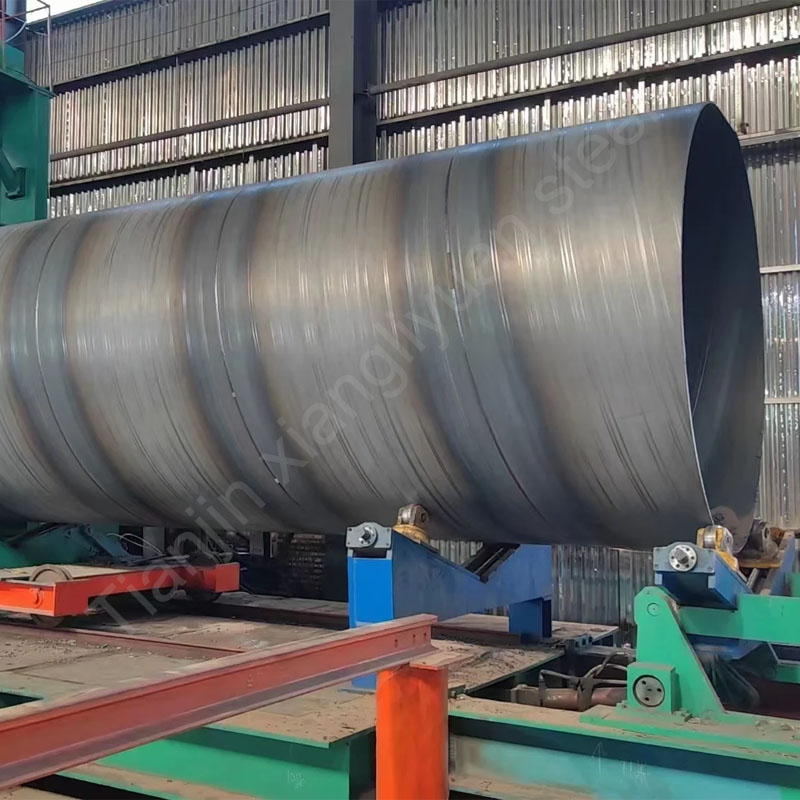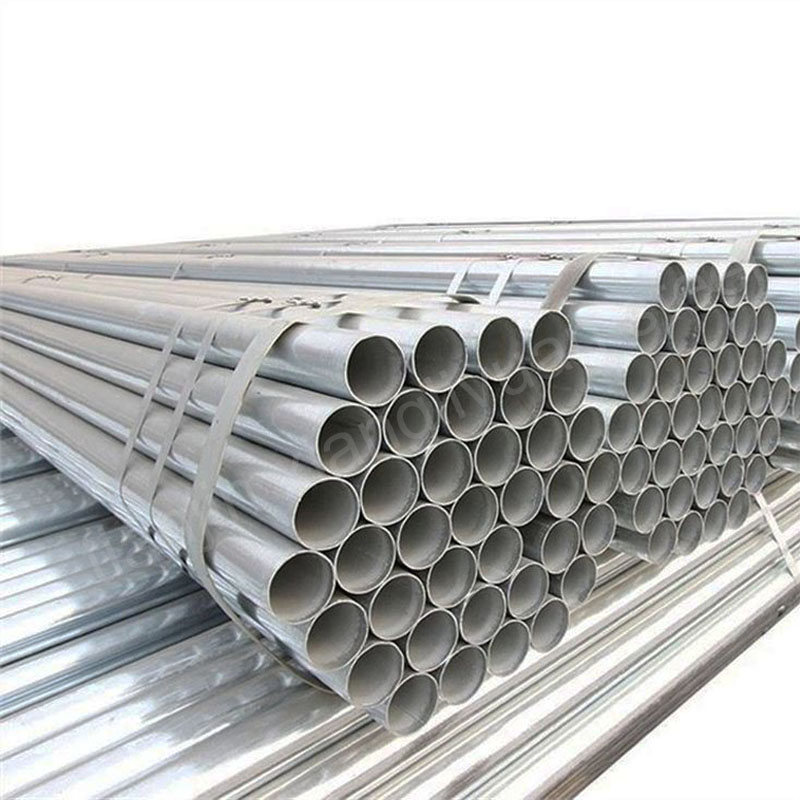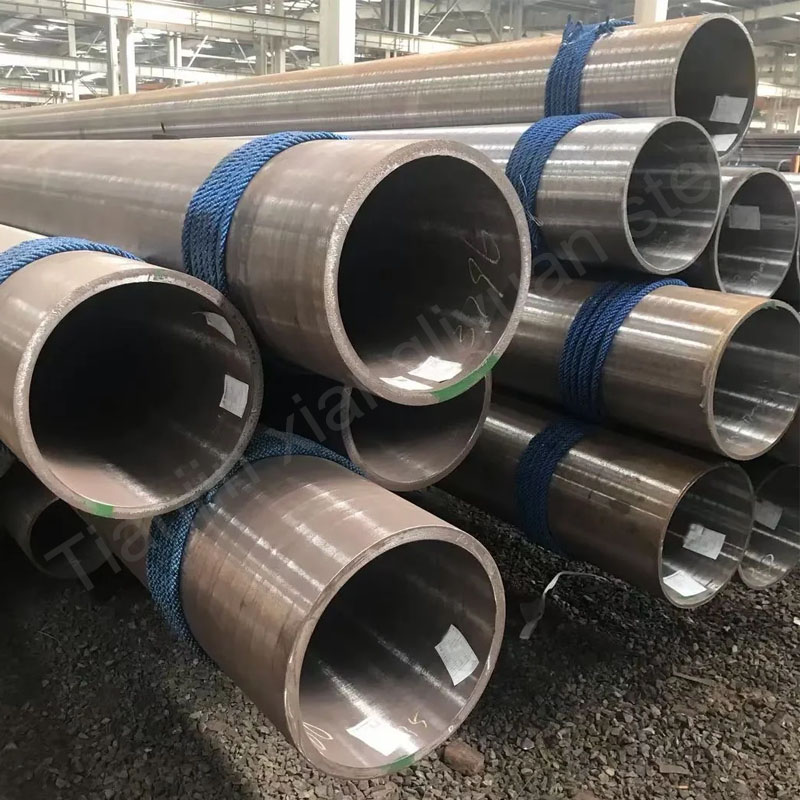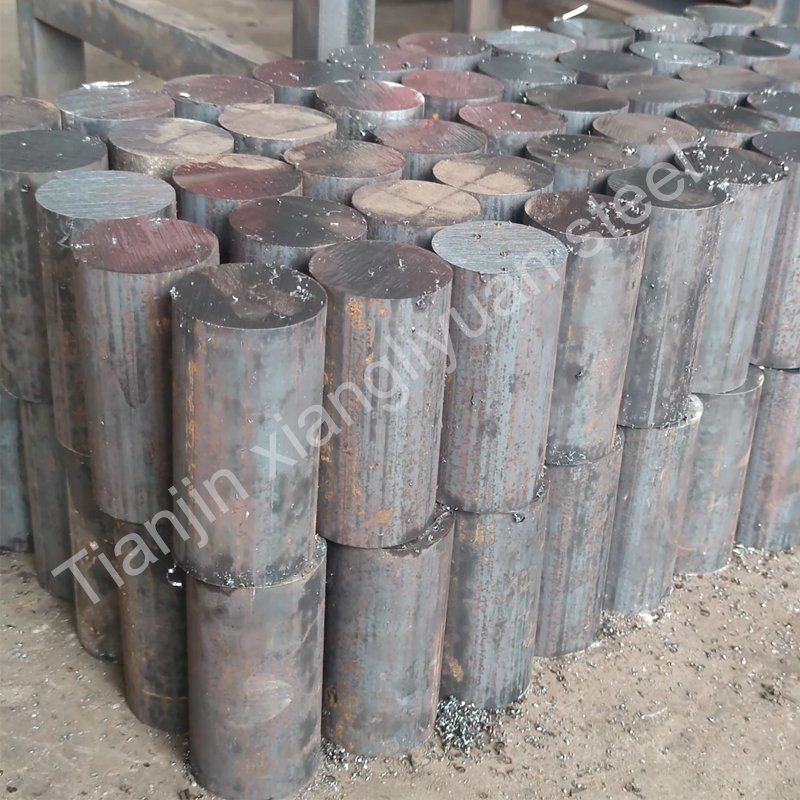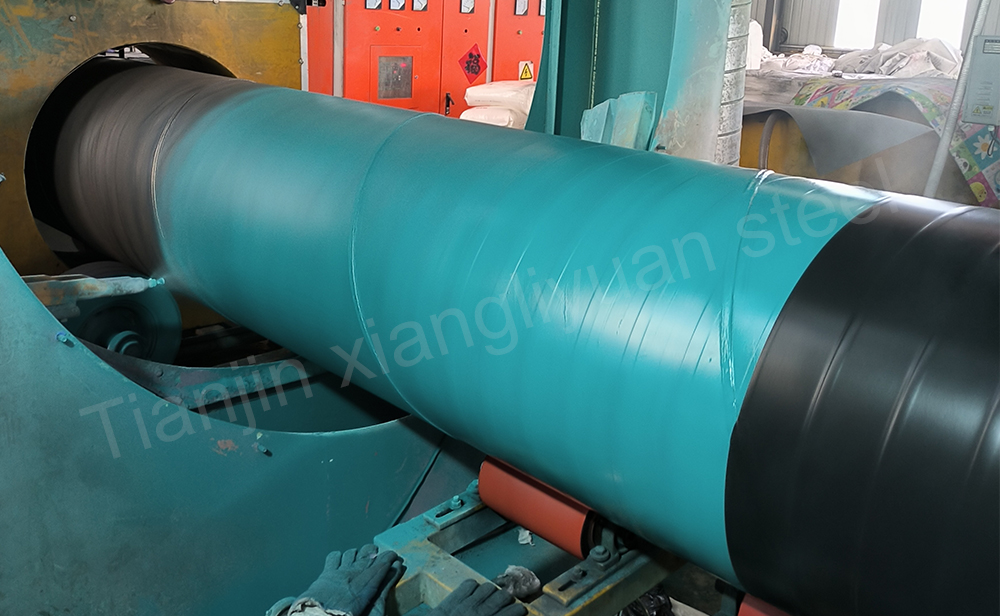Spiral welded pipe is a common type of steel pipe, and spiral welding technology is used in its manufacturing process. Spiral welded pipe has good strength and pressure resistance due to its unique structural characteristics and manufacturing process, and is widely used in fields such as oil and gas transportation, water conservancy projects and infrastructure construction.
Spiral welding technology is to roll the steel strip into a tube at a certain spiral angle (usually between 50° and 70°), and use submerged arc welding technology to continuously weld the edges of the steel strip to form an integrated pipeline. This welding method can not only manufacture large-diameter steel pipes, but also make more efficient use of raw materials and reduce production costs.
Production process of spiral welded pipe
1. Raw material preparation
The main raw material for producing spiral welded pipes is coiled steel strip. The steel strip first needs to be surface treated to remove impurities such as oxide scale and rust to ensure the cleanness of the steel surface during welding. After that, the steel strip is sent to the production line for straightening and trimming to ensure the flatness of the steel strip edge.
2. Forming process
The steel strip is rolled into a tube by a set of forming rollers according to the set spiral angle. During this process, it is necessary to ensure that the bending of the steel strip is uniform to avoid deformation of the pipe body due to uneven stress.
3. Welding
The welding process of spiral welded pipes adopts submerged arc welding (SAW) technology, which can achieve high-efficiency and high-quality welding. Submerged arc welding uses arc heat to fuse the welding material with the base material to form a solid weld. Welding is usually divided into two processes: internal welding and external welding to ensure the integrity and consistency of the internal and external welds of the pipe body.
4. Dimension correction and cutting
After welding, the pipe needs to be dimensional corrected by straightening equipment to ensure that its roundness and straightness meet the standards. Then, according to customer needs, the steel pipe is cut into specified lengths.
5. Surface treatment
The finished pipe needs to be surface treated, such as rust removal, coating or galvanizing, to enhance its corrosion resistance.
Quality inspection standards
The quality of spiral welded pipes directly affects its safety and reliability in use, so quality inspections must be strictly implemented during the production process. The following are common quality inspection items:
1. Raw material inspection
Before production, the steel strip is tested for chemical composition and mechanical properties to ensure that it meets the corresponding standards (such as AISI, ASTM or GB standards).
2. Weld inspection
The weld is a key part of the spiral welded pipe. Ultrasonic testing (UT) and radiographic testing (RT) are usually used to check the internal defects of the weld, such as pores, cracks, etc. In addition, the weld needs to be subjected to bending test and tensile test to evaluate its mechanical properties.
3. Geometric dimension inspection
Use special measuring tools to check geometric parameters such as pipe diameter, wall thickness, roundness and straightness to ensure that they meet technical requirements.
4. Water pressure test
The steel pipe is placed in a high-pressure water environment to test its pressure resistance to ensure that no leakage or rupture occurs within the working pressure range.
5. Anti-corrosion performance test
The surface coating or plating is tested for adhesion and corrosion resistance to ensure its service life in harsh environments.
Spiral welded pipes have become an important choice for various projects due to their high manufacturing efficiency, strong dimensional flexibility and relatively low cost. The production process involves many strict procedures, and quality control is carried out throughout. Through scientific technology and strict testing, spiral welded pipes can meet the use requirements of various complex working conditions and provide reliable material guarantee for modern industry and infrastructure construction.

